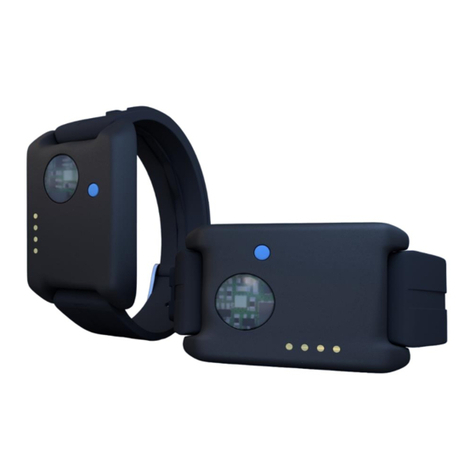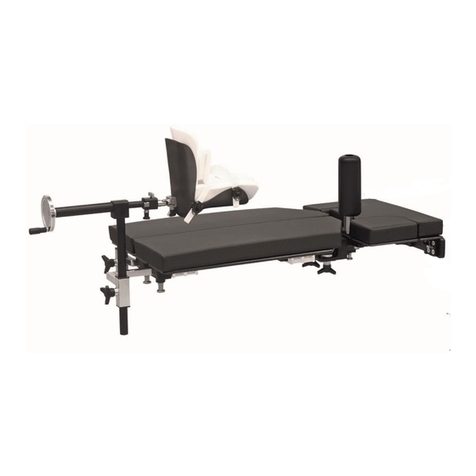
Instructions for Care and Use Condor® Traction boot – Edition 2022-07-13 EN 6
Summary of the safety instructions
Attention!
User‘s duty of documentation. Use the documenta-
tion code and labels supplied with the product as
proof of single use.
Attention!
Pay attention to the patient‘s position each time the
extension table is adjusted, and check this! Avoid
unintended tensile loads and rotation of the legs.
Attention!
Reduce all changes of position during the operation.
Attention!
Check all components for proper function before
every use. If certain parts display wear, they must
be re-ordered. Returning a shoe may also prove
necessary. Always carry out visual inspections!
Attention!
The entire patient weight should not exceed a
maximum of 250 kg. Use the specication of the
respective extension device / operating table to
determine this. If the specication are under 250 kg,
then this weight must not be exceeded.
Attention!
Use the given table and regularly perform inspec-
tions on the product. Document this procedure.
Expand the table according to your needs!
Attention!
Document instruction in the medical product
according to medical products law.
Attention!
Always follow the handling guidelines in
these instructions for use.
Attention!
The traction boot (RO.0162.2018, RO.0074.2018,
RO.0073.2018) are suitable from shoe size 37 to 45
according to experience. Please note that the entire
anatomy must be taken into account when
selecting the shoe (e.g. calf circumference, foot
width).
Attention!
Experience has shown that the traction boot in size
S (RO.0081.2019, RO.0082.2019) are suitable for shoe
sizes 32 to 37. Please note that the entire anatomy
must be taken into account when selecting the shoe
(e.g. calf circumference, foot width).
Attention!
The manufacturer is freed from all legal
responsibility in the case of unintended use, or use
that deviates from these instructions.
Attention!
Make sure the locking bolts, clamping screws, and
other locking options between traction boot and
extension device, are xed securely.
Attention!
Only use all-purpose cleaning agents that are slight-
ly alkaline (soap solution) and contain surfactants
and phosphates as cleaning-active components. In
the case of extremely soiled surfaces, use concen-
trated all-purpose cleaners.
Attention!
All serious incidents which occur in conjunction
with the product must be reported to the manu-
facturer and to the responsible authority in the
member state in which the user is located.
Attention!
If the surfaces of the product are strongly soiled,
we recommend cleaning the product additionally
before disinfection.
Attention!
Do not use cleaning tools that can scratch (e.g. steel
wool). This could damage the surfaces.





























